Alyssa here! I thought I’d dedicate a blog post specifically to our home base, Bologna, to give you a feel for what life in this unique, medieval city is like! The title of this blog post refers to the three nicknames often attributed to Bologna, so let’s dive into each one:
La Dotta – The Learned
This nickname comes from Bologna’s largest institution: the university! (Re: the whole reason we came here). Alma Mater Studiorum – University of Bologna, hereafter referred to as UniBo, is the oldest university in continuous operation in the world. It has almost 80,000 students enrolled each year which is about 10% of the city’s entire population, so you can imagine that it accounts for a huge part of the city’s culture. The campus in Bologna is spread out throughout the city and there are satellite campuses in some nearby towns as well. The program I am enrolled in for my exchange is called GIOCA. The acronym translates to Master of Innovation and Organization of Culture and the Arts; a bit of a mouthful. It’s a sister program of my master’s degree at Carnegie Mellon University: Master of Arts Management. GIOCA is an international English-language program. There are students in my class from Italy, France, Greece, Albania, Iran, China, Russia, and Brazil!
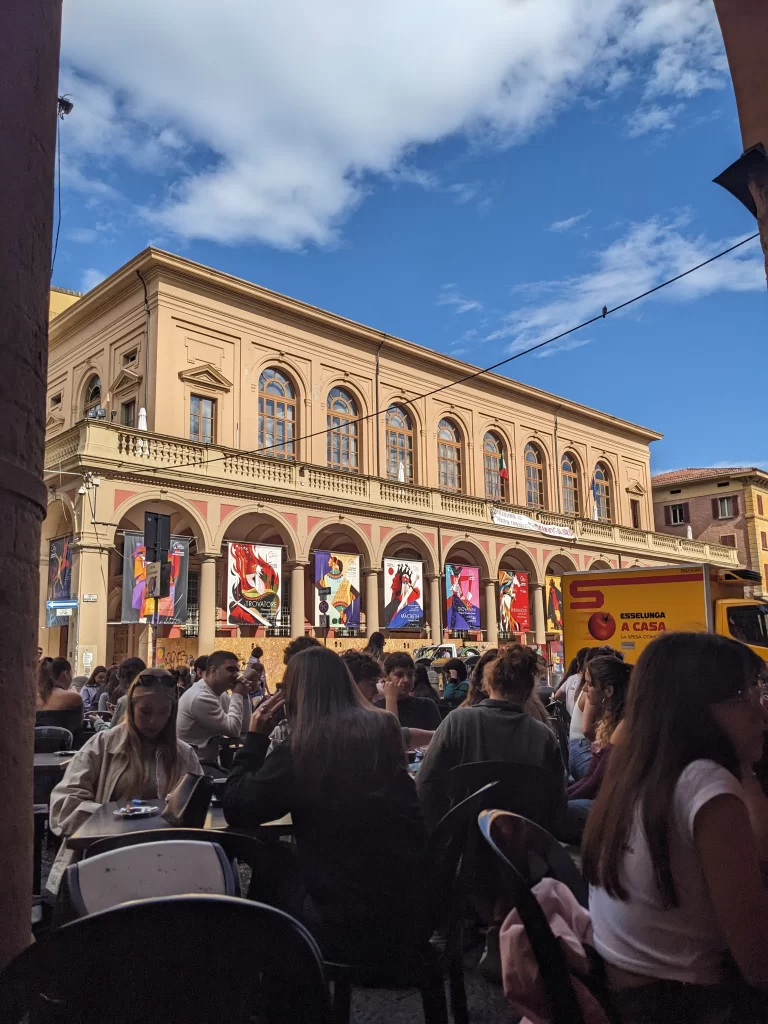

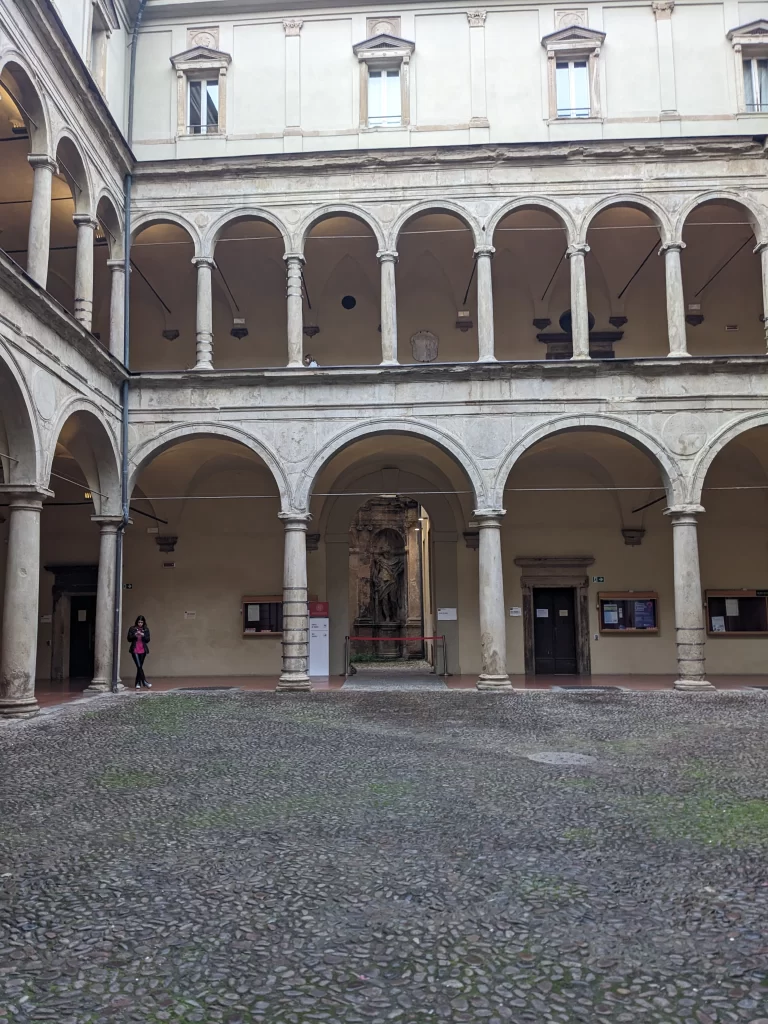
I was excited to see what this degree program/career path looked like for non-US students. Class styles are definitely…different here. I quickly realized how grateful I was for the quality of teaching and experiences I’ve received so far at CMU. Here at UniBo, it’s mostly just sitting for 3-hour lectures (some of which are on topics I’ve already had classes in). My classes are in Media Management, Cultural Policy, Sociology, Arts Law, and Communication. I’m grateful to have the experience of interacting with international students and learning a bit about how the arts management world functions in Italy, but I’m definitely looking forward to returning to finish my last semester of CMU.
If I’m being totally honest, the classes weren’t the main draw for us to relocate to Italy in the first place. So let’s move on to what makes me excited to wake up every morning in Bologna….the FOOD.
La Grassa – The Fat
Bologna is in the Emilia-Romagna region which by some standards is considered to be THE food capital of Italy. If you know me, you know pasta and cheese are my two main food groups, so I was so excited to dive into the culinary scene here and I have NOT been disappointed.
Some of the foods that Bologna is famous for inventing are tortellini, mortadella (a better version of bologna), tagliatelle al ragu, parmigiano reggiano, and lasagna. Another favorite local pasta dish is gramigna: short squiggly noodles usually served with sausage in cream sauce. We’ve also really enjoyed sampling wines from the region like the reds Sangiovese and my personal favorite: Lambrusco which is slightly frizzante (bubbly) and served chilled. Tagliere is another favorite: their word for charcuterie (it literally means cutting board).
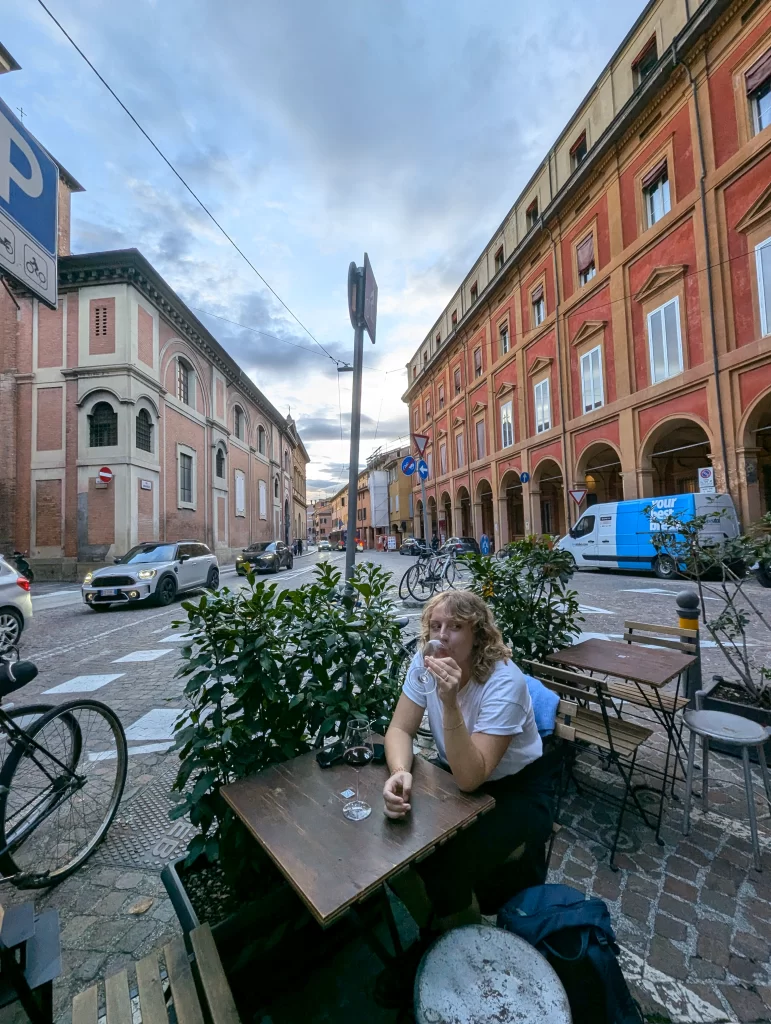
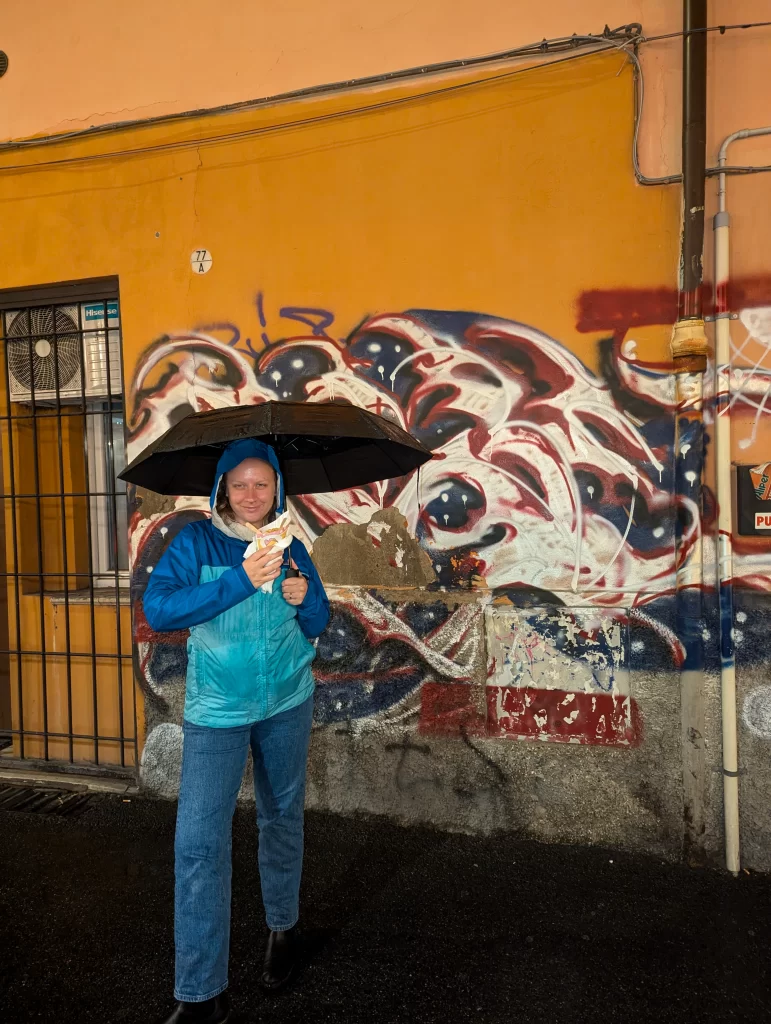

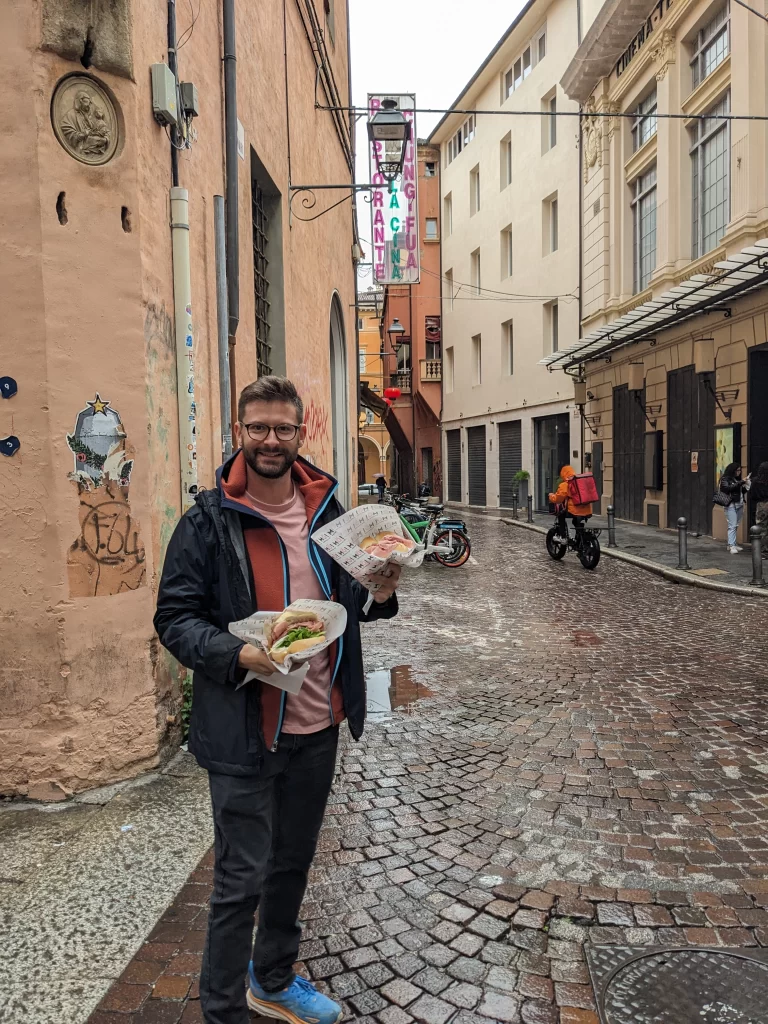
There’s no shortage of delicious, fresh food here. It’s also much more affordable than in the States. We are enjoying every meal while we’re here and already mourning when we have to take our last bite before coming home.
La Rossa – The Red
I’ve heard two interpretations of this nickname. Bologna is well known for its brick stucco buildings which are all lovely shades of red, orange, and yellow. It also has a fairly liberal bent as one of the younger cities in Italy filled with progressive students and activists associated with the color of communism – red. There’s certainly a gritty element to this city. In the literal sense, the center of the city within the walls is a maze of cement, roads, and buildings with little green space. Lots of people have dogs (which is cute) but with no parks to go potty, we often find ourselves having to step carefully if you get my gist. There’s also a large graffiti/street art scene much of which expresses the liberal bent of the city. Anti-war, anti-overtourism, and anti-capitalist messages can be seen all over.
As Americans visiting the city, we are often hyper-aware that we may represent the things Bolognese residents are trying to resist. We’ve never felt unsafe of threatened, but it can be uncomfortable to be seen as a tourist that comes from a culture of over-consumption and a less than ideal political scene (to put it nicely). It’s definitely been a time to exist outside our comfort zone, listen and learn about another culture, and think about what it means to be American in today’s world. It’s all part of the experience that we’re super grateful to have and we’ve tried to dive into the city and it’s surrounding towns and landmarks.
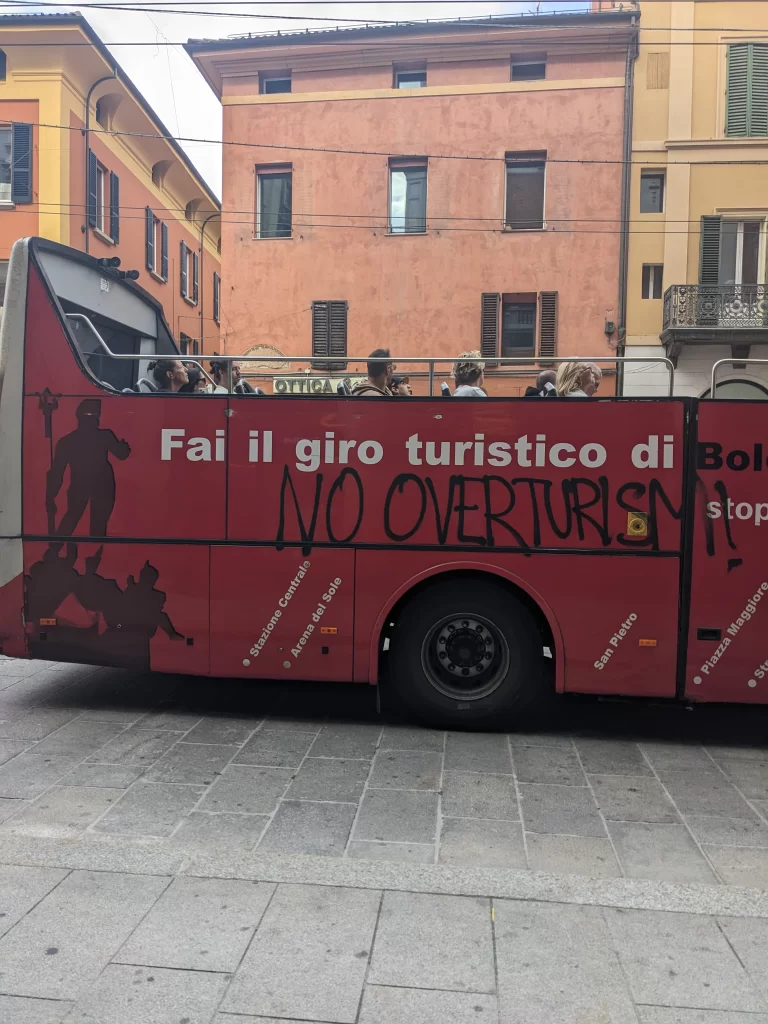
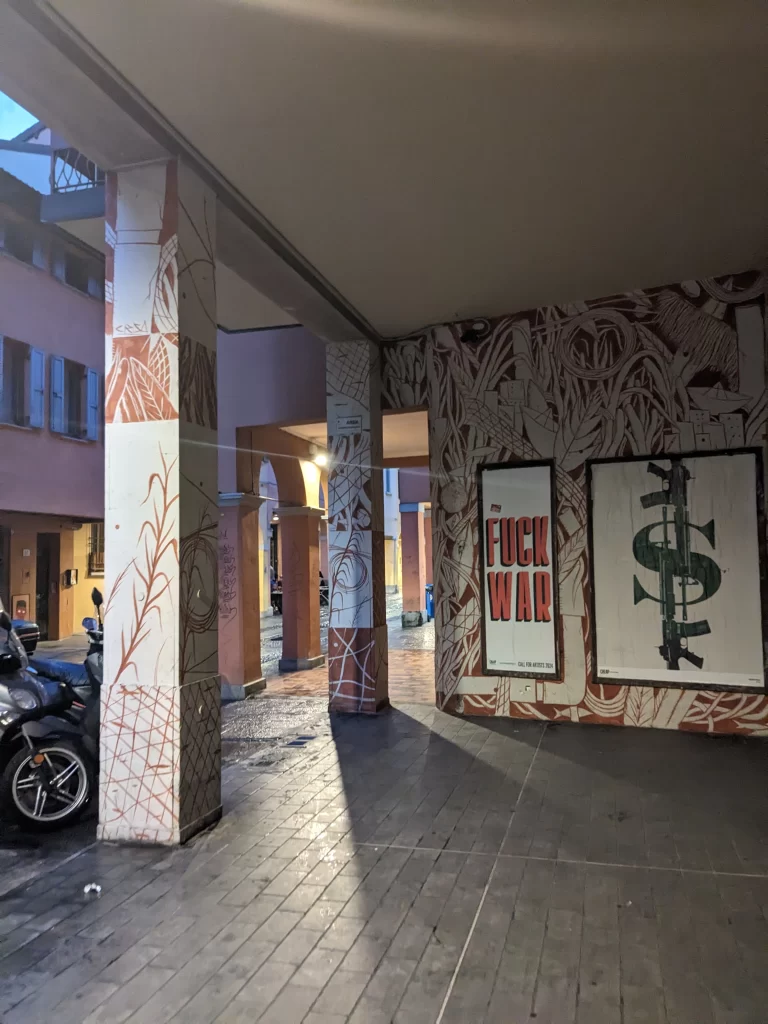
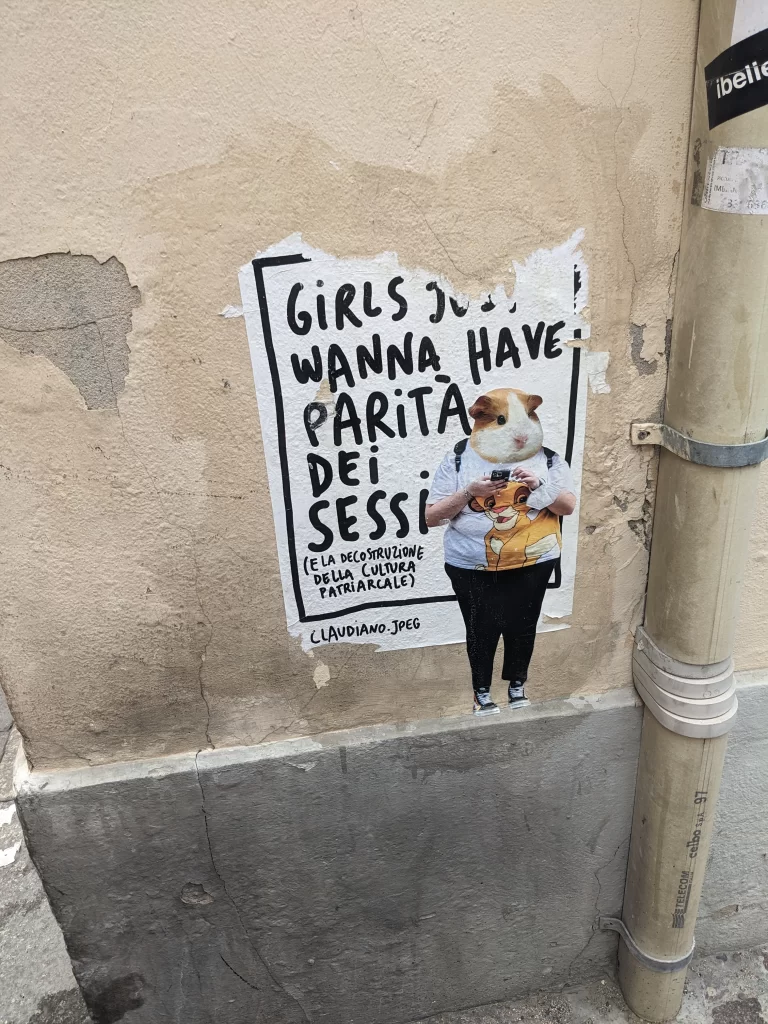
Nearby Trips
There is a large church called Basilica di San Luca that sits on top of one of the tallest hills within the city. To get there, you can walk through the world’s longest portici (if you’ve been paying attention to the blog you’ll know what those are 😉 ). There are 666 connected portici. Many students avoid walking it before graduating as part of a superstition that relates to the devil’s number. I already hiked it, so here’s hoping I still graduate. They steeply lead you up to the beautiful church with a breathtaking view of the city and the surrounding region.
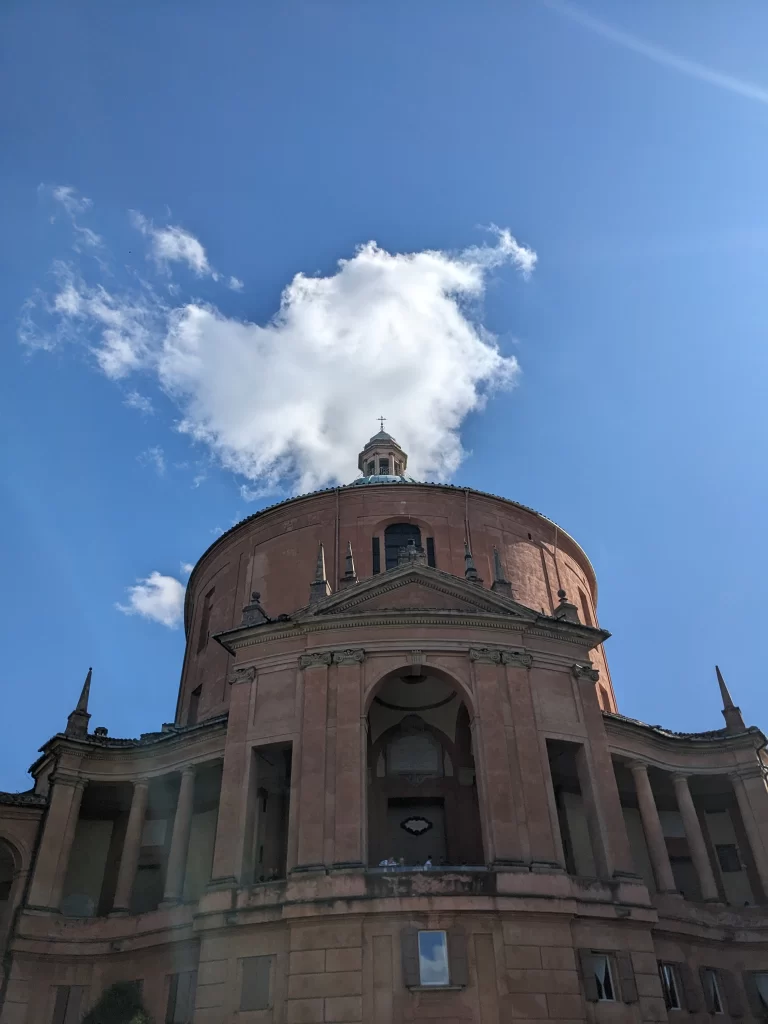
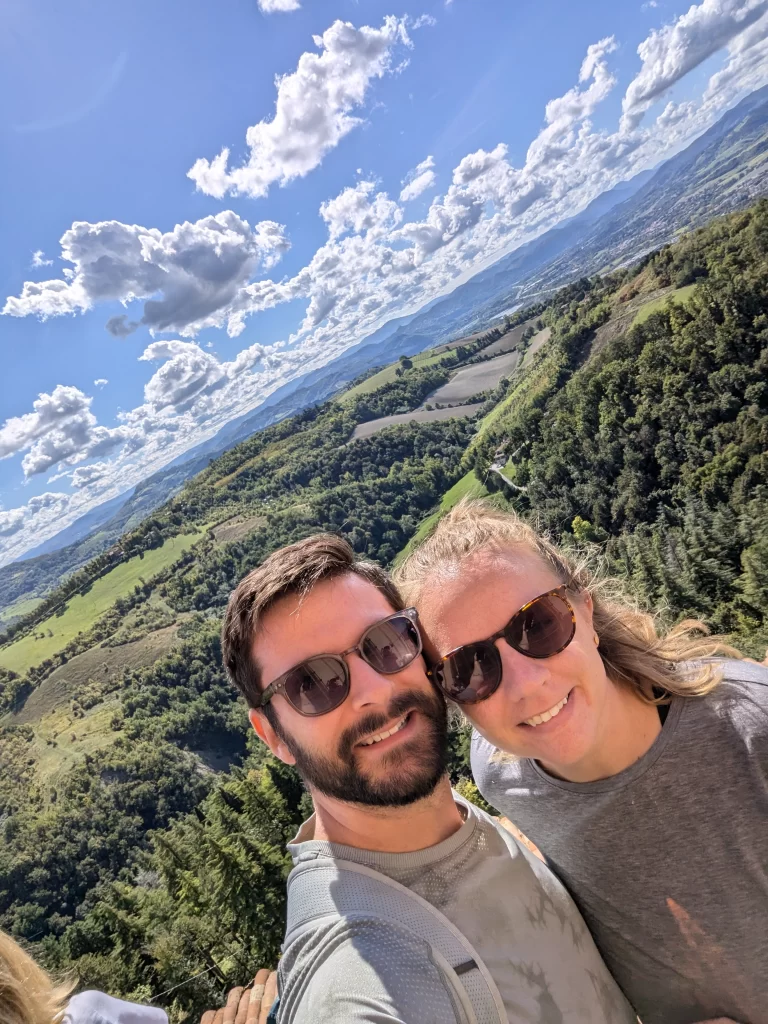
Each town in Italy has a patron saint. Bologna’s is San Petronio. His cathedral is located in the largest square in the middle of centro and his special day was on October 4. Classes were cancelled and we gathered in the piazza maggiore to watch a fireworks show in his honor.
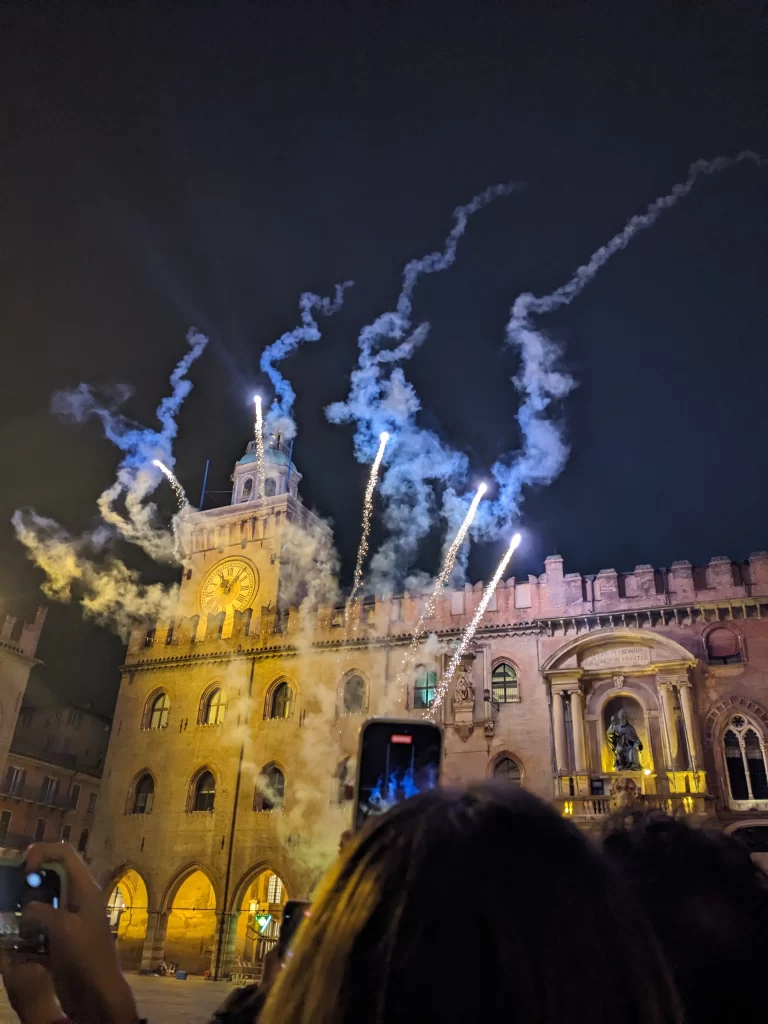
We took the train about 20 minutes West to visit Modena, another lovely town in the Emilia-Romagna region. Modena is best known for the production of balsamic vinegar at acetaie or vinegar production farms. We haven’t visited one yet, but you can tour them and learn about how balsamic is produced and sample different vintages just like wine. We did get to try some on a super delicious lunch we had with giant tortelloni filled with ricotta and prosciutto. I still think about this meal. The town was smaller than Bologna but beautiful and clean. We got to see a Salvador Dahli exhibit at their main museum.
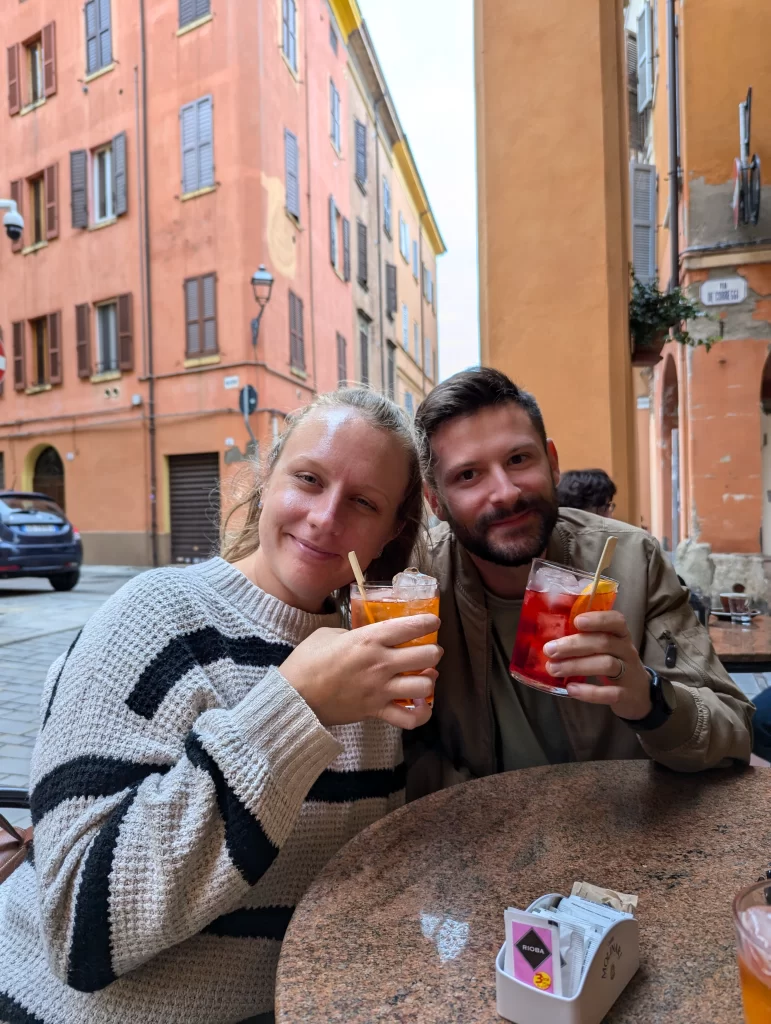

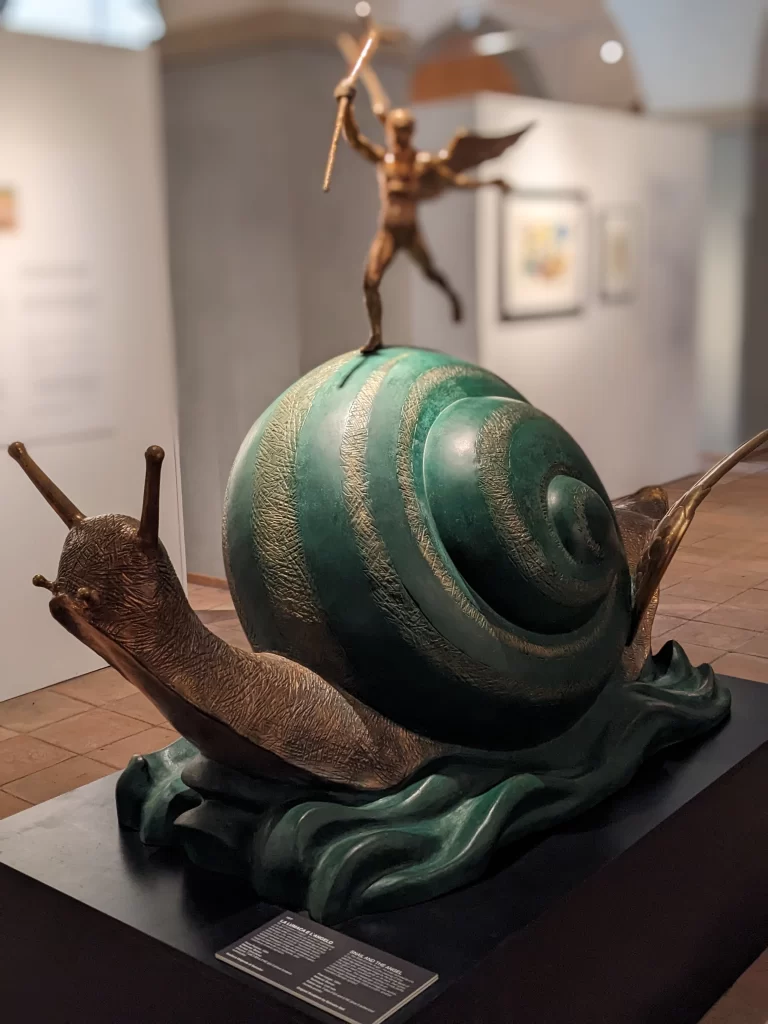
Most recently, we took a day trip to Ravenna which is about an hour east of Bologna by train. Ravenna has 8 UNESCO monuments, including a few basilicas from the 4th and 5th century that are completely covered with mosaic art inside. This was one of our favorite places so far. The mosaic work was breathtaking. We also got to see Dante’s tomb – Ravenna was his final resting place. The history and beauty of this small town is astounding. Not to forget the food, we had piadini which are flatbreads stuffed with your choice of meats, cheese, and veggies. Delizioso!
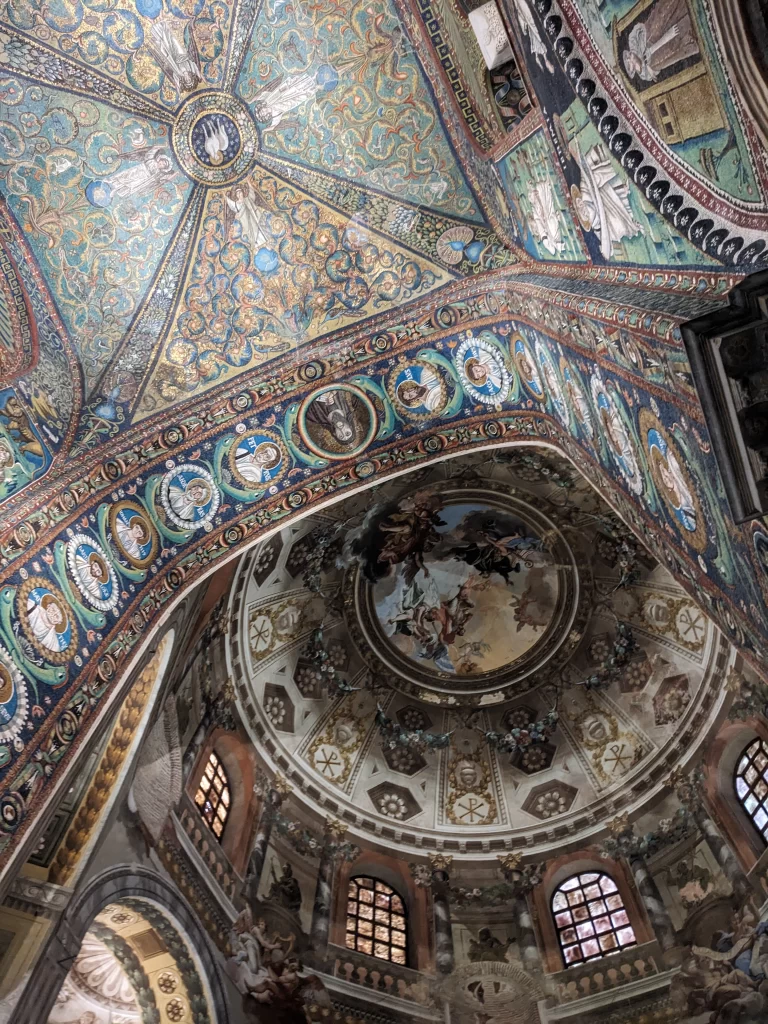

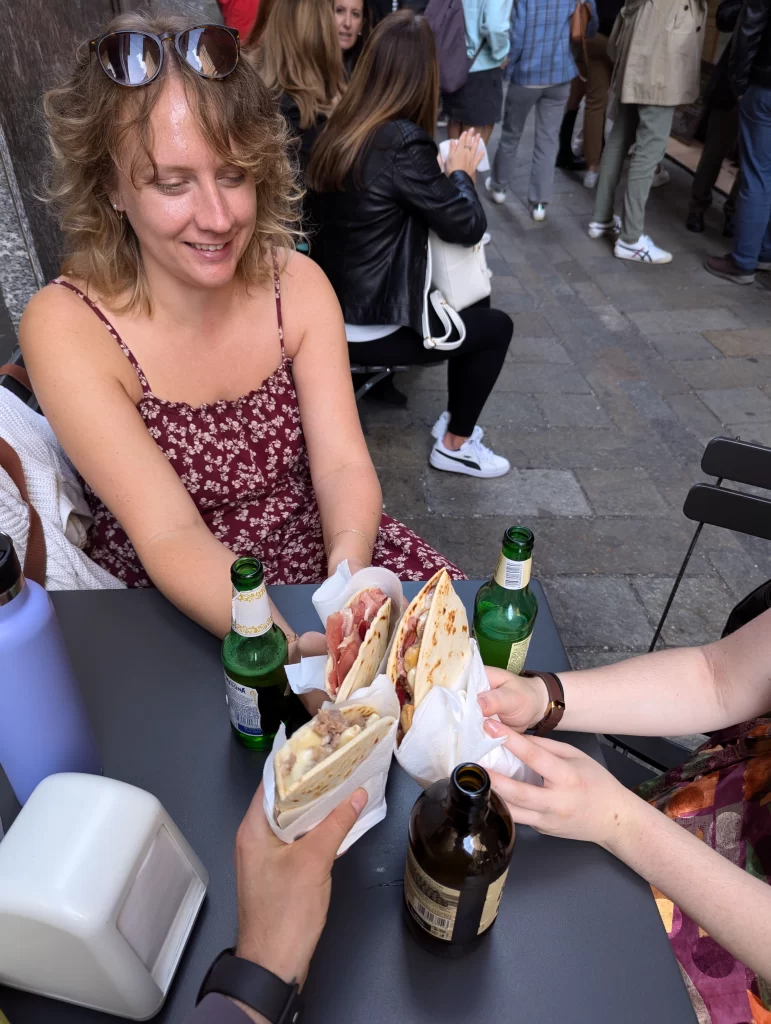
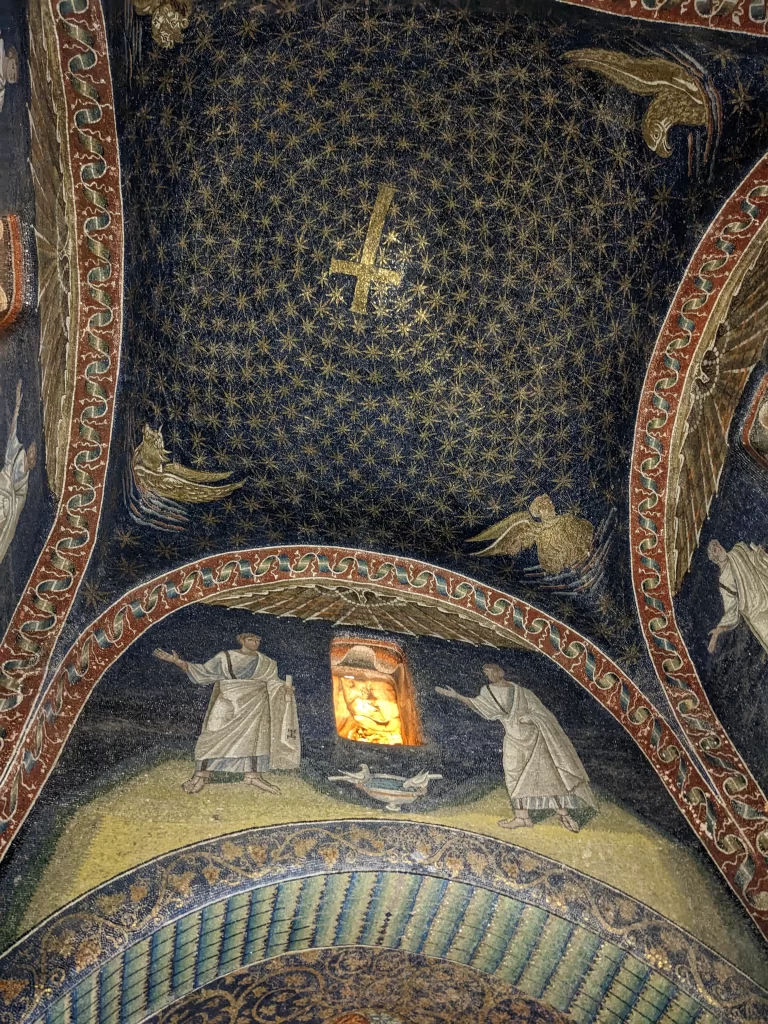
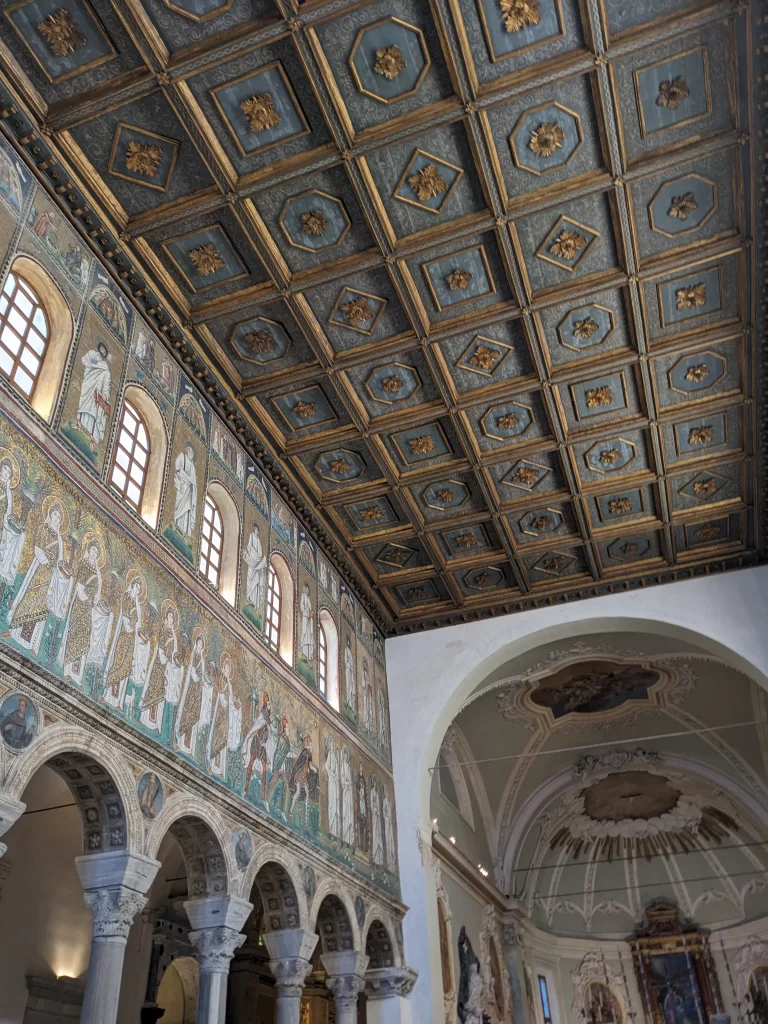
Thanks again for following along on our journeys! We’re headed down south to Sicily to visit the city of Palermo this weekend so we’ll make sure to share in all the wonders we find in that seaside city!
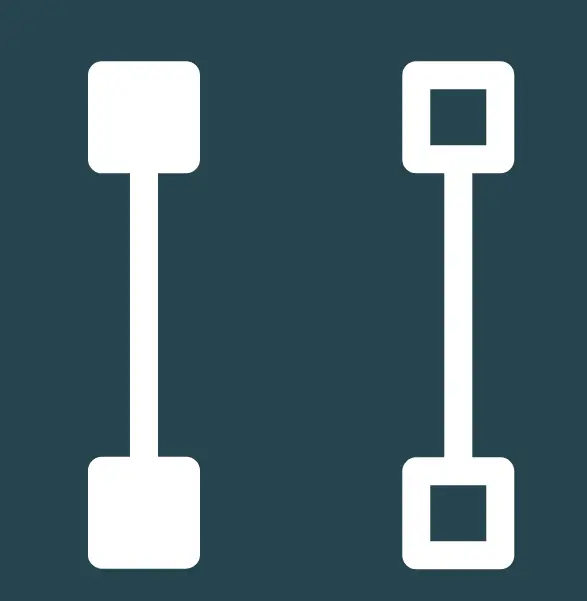

Such a great narrative!! We are going to have to hire you guys to take us back and show us around. Seems like you are really investing in the culture and feeling the very fine details!!
Wish we were there!!
Dad